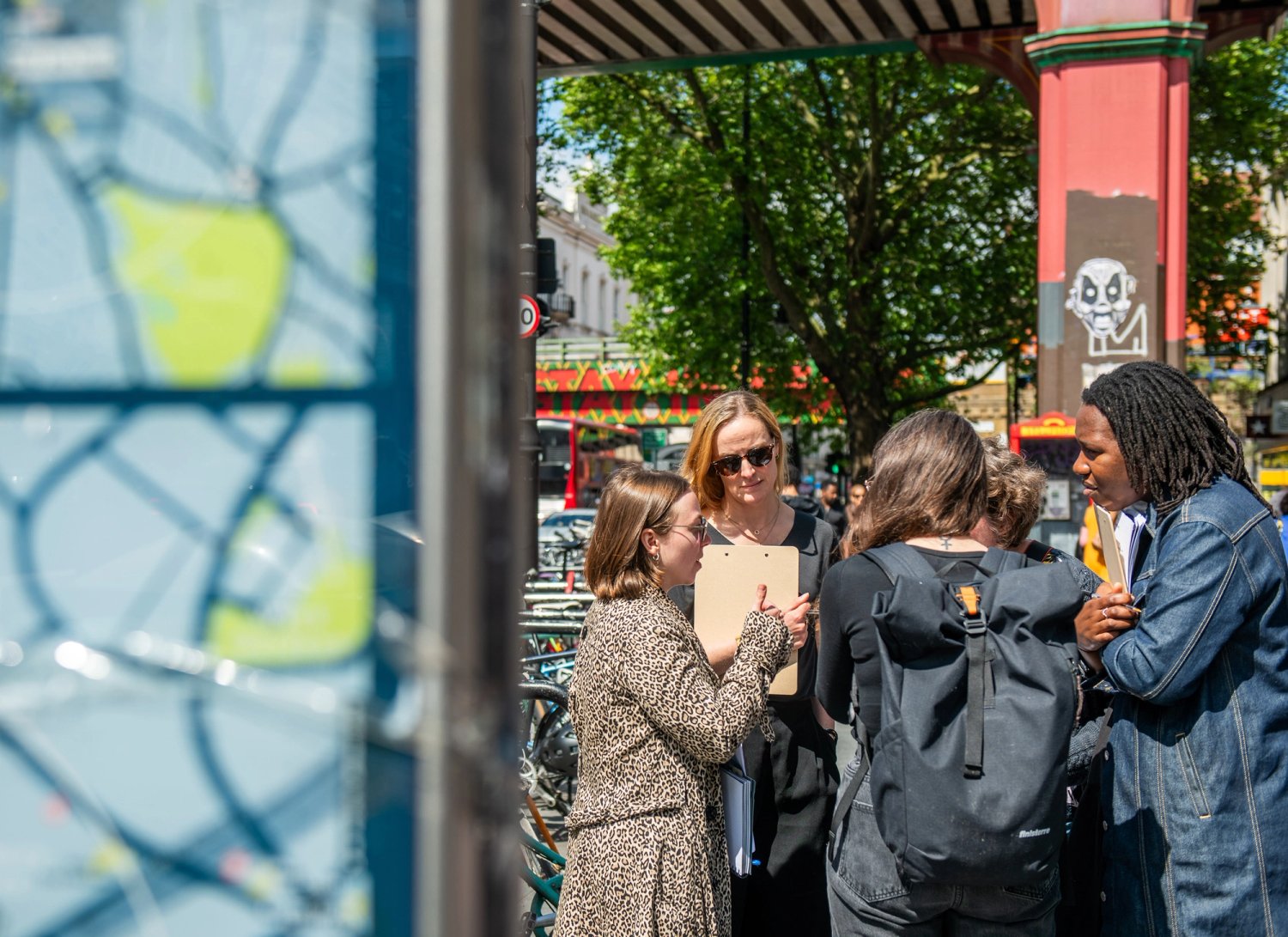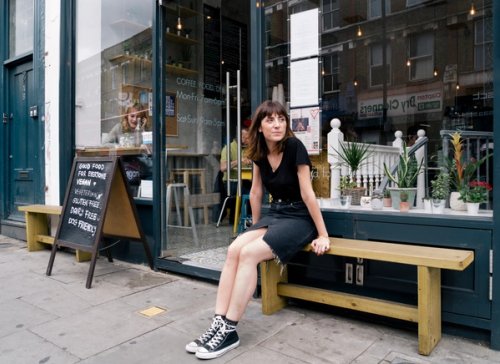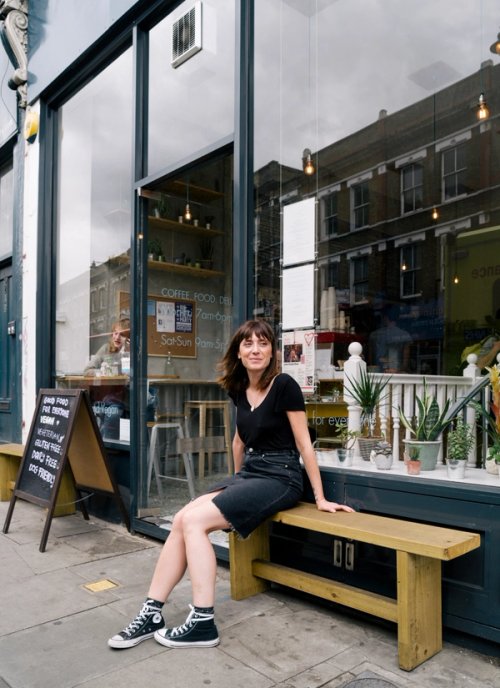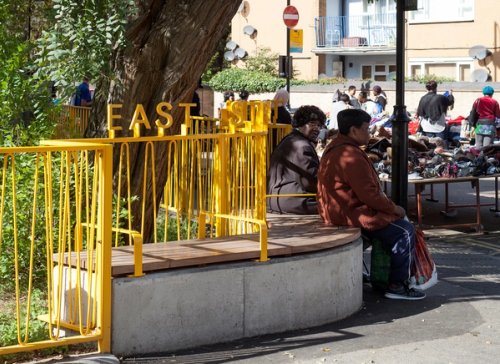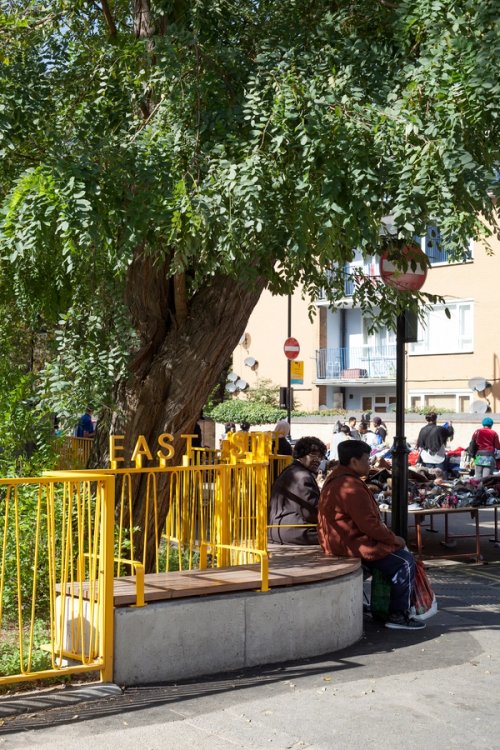Feelings in Place
Professor Clare Rishbeth
11 March 2025
It’s not often that an architecture and design practice has the opportunity to collaborate so closely with an academic. While we frequently engage with academic researchers through projects, opportunities for deeper, longer-term hands-on experimentation are rare. Thanks to an Innovation Scholar research grant from the Arts and Humanities Research Council UK, we had the chance to work with Professor Clare Rishbeth on a year-long exploration of participatory methods in urban design practice.
Clare Rishbeth, a Professor in Landscape Architecture at the University of Sheffield, was seconded to We Made That for a year. You can read Clare’s introduction to the key findings from the research, the ‘Feelings in Place’ principles’ and her outline of the purpose and scope of the ‘Feelings in Place’ methods guide for emotional honesty within community engagement processes.
Our hope is that by sharing this journey, others can also benefit from this experimentation— applying, adapting, and evolving these approaches within their own work. In doing so, we can collectively target more just spatial outcomes for our design processes.
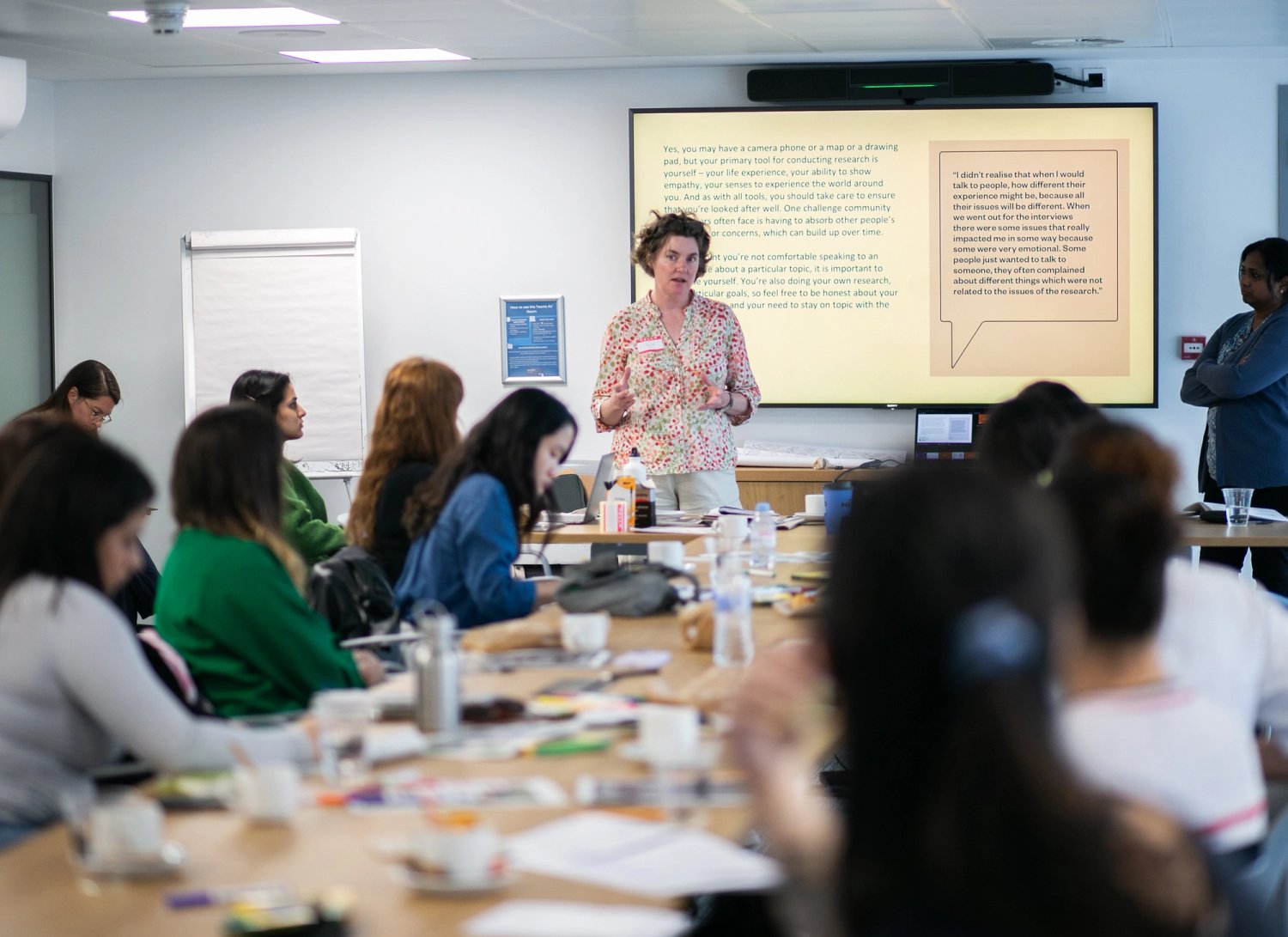
Professor Clare Rishbeth
Spatial justice is not just what gets done but also how it gets done. The ‘how’ and the ‘who’ of engagement is important. The right to representation and collective advocacy in processes of urban change will never be achieved though superficial or tokenistic forms of ‘consultation’. My collaboration with We Made That focused on how local knowledge and priorities are surfaced, how less-often-heard voices are amplified, and the need for talking about feelings in places, as well as about places.
‘Feelings in Place’ principles
The ‘Feelings in Place’ principles set out to describe what ‘good’ can look like, with an emphasis on honest storytelling. It’s not possible to force story-holders to be tellers, or story-tellers to be honest. But as design professionals we have found that the ‘feelings in place’ principles can help us hear and validate the emotional dimensions of local experiences which shape an everyday quality of life.
Acknowledging mixed emotions about different places can counter stereotypes and stigmatisation.
- Reflect that people are more than one thing, and different aspects of peoples’ identities and life history shape their relationship with local places.
- Capture something of the way that experiences of place can change.
People’s ‘feelings in place’ need to be heard and shared in ways that are honest and respectful.
- Find languages and forms of communication that are meaningful within the setting and can reflect ambiguity and mixed emotions.
- Be open to engaging with tricky experiences but do not require a rehearsal of trauma. Look out for telling details which can point to the stories behind the stories, and ensure that participants can decide what personal history to share.
- Give space for non-judgemental discussion of the specifics of social dynamics, the ‘me’ or ‘us’ in relation to ‘you’ or ‘them’, and how this is connected to a sense of belonging or lack of belonging.
Who is included and what happens next are both important.
- Enable relaxed conversations in relatively short periods of time, so that an appropriate range of people can be included in an engagement programme.
- What comes next is part of being accountable. Include time and give expertise for synthesis of findings, and the input of these into wider stakeholder decision making.
‘Feelings in Place’ methods
The methods that we present in the ‘Feelings in Place’ guide are shared with the hope that they can be used in engagement processes by architectural and landscape practices, local authorities or urban researchers. Drawing on methods used in ethnographic research within academic contexts, we have adapted and tested these for use in practice settings, where it is important to hear from a wide range of people usually over a short period of time.
A project-specific engagement strategy needs to choose exercises to engage with ‘feelings in place’ that are achievable within the skill set and time resource of the project team, and an approach which supports good communication relevant within a particular context. Both these need to be guided by an overarching process by which knowledge is shared and then acted on.
The guide uses three examples to demonstrate how the ‘Feelings in Place’ principles translate into practical and effective methods. For each we include a description of the method, a walkthrough of the process, and reflections on the outcomes.
- Multisensory scanning: This is an exercise to use in an outdoor location with a small group of participants. It uses the power of multisensory responses to simulate thoughtful discussions of how someone feels in a place, also touching on how places change, the impact of other people, and design details which are positive or problematic.
- Emoji storytelling: This is an approach to engaging with participants which focuses on finding a language that is meaningful in expressing nuance and contradictions and can encourage storytelling and memory sharing.
- Working with community researchers: This process requires a higher level of experience, time and budget, but is extremely powerful in supporting diverse and honest voices within engagement. We give an overview of how we used this process in combination with the multisensory scanning exercise.
The ‘Feelings in Place’ guide can be downloaded here.
